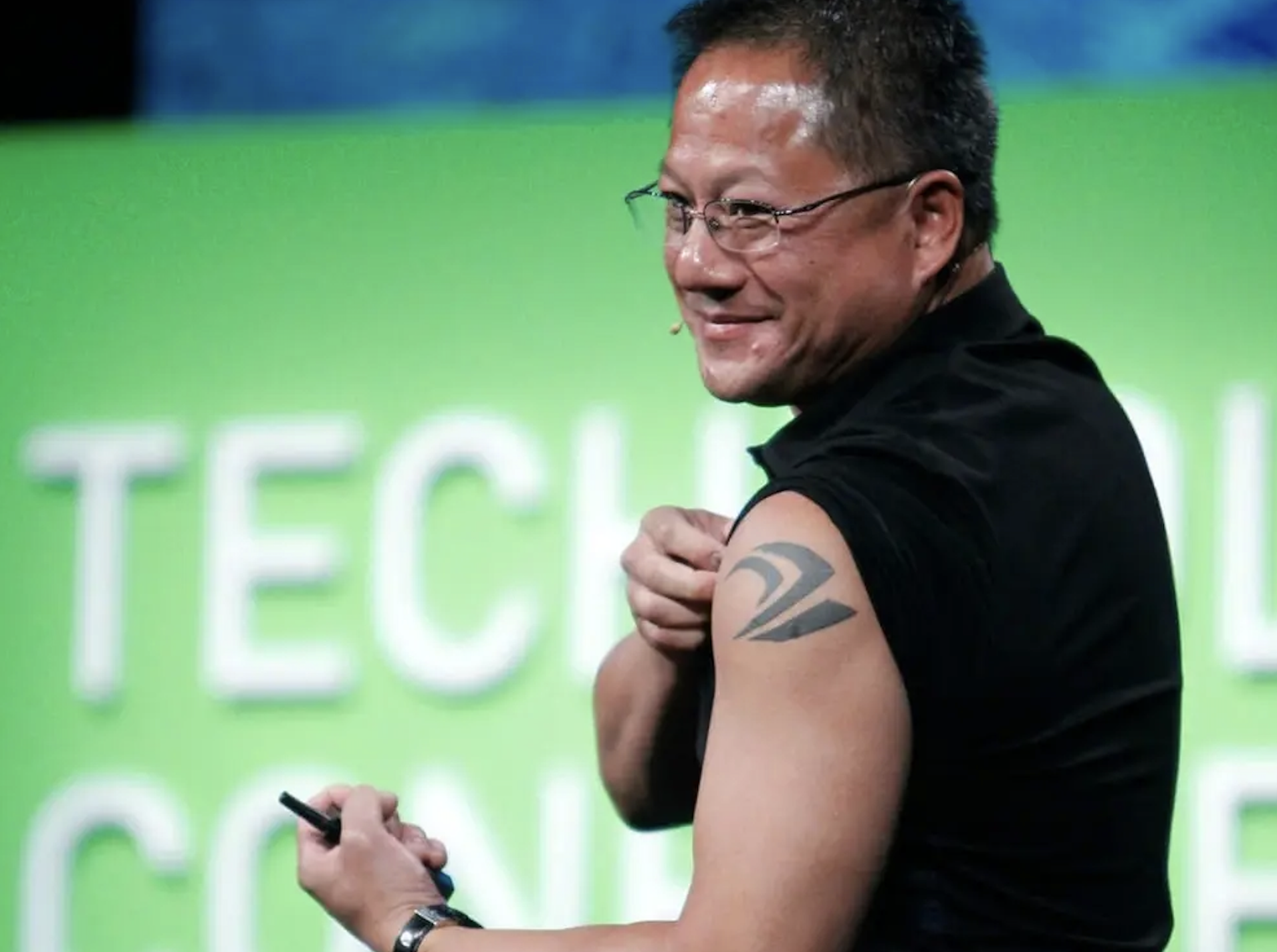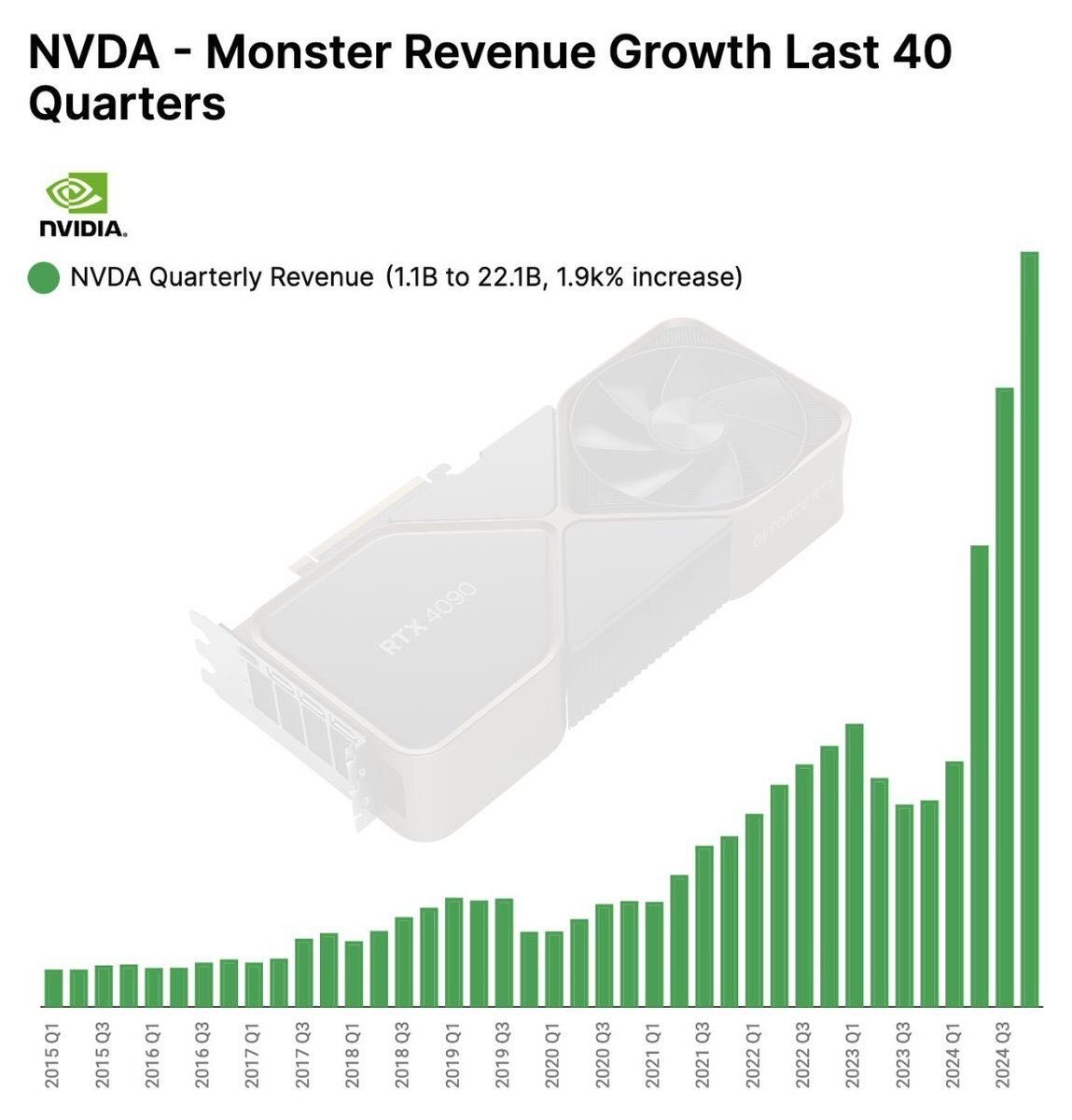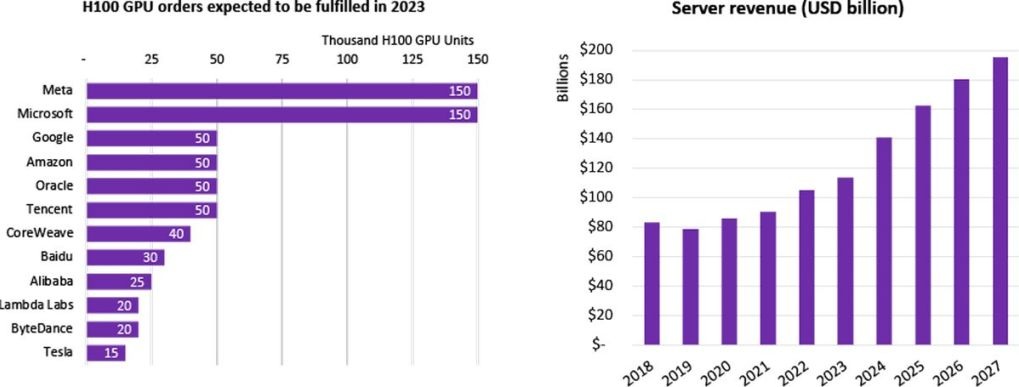Nvidia's Leading Position
The semiconductor industry is on the rise, and huge amounts of money are pouring into the semiconductor ecosystem, from mining, selecting, and processing minerals to research and development, and manufacturing into chips.
It is estimated that this market could be worth nearly ten trillion USD. Many companies in this field from Asia to America and Europe have achieved many huge successes.
For a long time, many "big guys" in the semiconductor industry have been sitting at the top of the rankings of profitable businesses. Not stopping there, many experts believe that the era of semiconductor businesses has really just begun.
Founded more than 30 years ago with an initial focus on computer graphics chips for PC gaming, Nvidia soon turned its attention to AI.
Jensen Huang is one of the longest-serving CEOs in the tech industry. He laid the groundwork for Nvidia's AI development in 2006 when he developed its chips for purposes beyond computer graphics.
Nvidia has emerged as the biggest beneficiary of a race among tech companies to build artificial intelligence (AI) into their products and services, with many major tech companies spending billions of dollars to buy Nvidia’s graphics processors.

Nvidia CEO shows off logo tattoo on his arm (Photo: Reuters).
Nvidia's graphics processing units (GPUs), the H100, are often used to create the most sophisticated AI systems. Nvidia's H100 is currently known as the most powerful GPU on the market, but it is also expensive, around $30,000-36,000 and can reach $40,000 when in short supply.
However, AI developers have had to wait in line for months to use Nvidia's processors through cloud computing providers.
Satellite businesses in the semiconductor industry, which play a role in processing finished products, also own famous businesses such as TSMC, Samsung, SMIC... with revenue of up to tens of billions of USD per quarter.
Analysts estimate Nvidia can produce about 1.2 million chips a year, but meeting demand is becoming increasingly difficult. Nvidia designs the chips and contracts manufacturing with the world's largest semiconductor company, TSMC.
However, the company is experiencing bottlenecks in the later stages of the manufacturing process, where silicon wafers are assembled into final products. TSMC is aiming to double capacity in the next stages this year.
Rapid growth
It took Nvidia 24 years as a public company to reach a $1 trillion valuation. But just eight months later, it added another $1 trillion thanks to the chipmaker’s role in driving the AI revolution. Nvidia’s market capitalization recently topped $2 trillion.
The journey to becoming one of the most valuable companies in America began at a Denny's in 1993. The company has grown rapidly in recent years thanks to Nvidia's dominance in the GPU space.
These chips have become a scarce, precious commodity, with Nvidia now accounting for about 80% of the market. Demand has outpaced production, prompting competitors to develop their own versions.
The ability to secure GPU supplies can determine how quickly companies can develop new AI systems. Many companies are using their steady supply of GPUs to hire more AI specialists. These chips are even used as collateral to borrow billions of dollars.

Nvidia's revenue grew strongly (Photo: Nvidia).
Fletcher Previn, chief information officer at networking technology company Cisco, said the chips were so valuable that they were delivered in armored vehicles.
When Nvidia recently reported its third consecutive quarter of better-than-expected earnings, company executives said supplies remained tight and that a new generation of AI chips expected to launch this year would be constrained in supply.
The chips make them a key part of training the massive language models that underpin generative AI like OpenAI’s ChatGPT. The bulk of AI spending by tech companies like Microsoft, Alphabet and Amazon.com is on GPUs.
Generative AI is sparking a trillion-dollar investment wave that he believes will double the number of data centers in the world in the next five years and create a market opportunity for Nvidia, said Nvidia CEO and co-founder Jensen Huang.
“A whole new industry is being created and that is driving our growth,” he said during the company’s meeting.
Nvidia posted revenue of $22.1 billion in the fiscal quarter ended in late January, up 265% from the same period a year earlier, and net income jumped nearly eightfold to $12.3 billion. Nvidia shares have surged 59% this year after more than tripling in 2023.
Fight to buy chips
In response to the artificial intelligence competition, four major Chinese technology companies are competing to buy chips from the "giant" Nvidia. Baidu, ByteDance, Tencent and Alibaba have bought about 100,000 A800 chips worth billions of dollars from Nvidia.
Today, Nvidia's GPUs, which provide the computing power to develop large models, have become an indispensable commodity for the world's major technology companies.
Fearing that the US will tighten its control over chips and that chip supplies will be disrupted, many companies have no choice but to stock up on A800 chips because no one wants to fall behind in the AI competition.
“Without the chips, we wouldn’t be able to train any language models,” said a Baidu employee.
ByteDance, TikTok's parent company, currently has several small research teams working on various general artificial intelligence products that are being tested internally.

H100 chip sales and expected server market revenue by 2027 (Photo: Omdia).
Last May, ByteDance tested an AI-powered chatbot called Tako on TikTok that could generate videos based on people's requests. TikTok also recently filed a trademark for Tako, and the company may be preparing to promote the chatbot.
ByteDance employees said the company has stockpiled at least 10,000 Nvidia GPUs to support the development of artificial intelligence-related products. They added that the company has also placed orders for nearly 70,000 A800 chips worth about $700 million.
Chinese companies have only a few thousand chips that can be used to train AI, and this strong demand has also led to a "shortage" of Nvidia chips.
Not only are cloud service providers and tech companies looking for chips, but many artificial intelligence labs are also ordering chips, and Nvidia is the most ordered chip company.
As demand increases, chip prices also increase. An Nvidia distributor revealed: "Currently, the price of A800 chips reaching distributors has increased by more than 50%."
Brian Venturo, co-founder and chief technology officer of CoreWeave, attributes this to Nvidia's dual strengths in chip hardware and software. He believes that no other company can make better chips than Nvidia.
Focus on developing own chips
The surge in chip demand has also prompted Nvidia's rivals to ramp up development of their own AI chips.
Advanced Micro Devices has begun selling chips to compete with Nvidia's products and expects sales of those chips to reach more than $3.5 billion this year.
British chip designer Arm Holdings is also getting in on the act. Intel has started selling central processors that can handle AI calculations.
There are also a number of startups making AI chips. And big cloud companies like Google and Amazon are also working on AI chips. Last November, Microsoft unveiled its first AI chip, called the Maia 100.

Jensen Huang, CEO and co-founder of Nvidia (Photo: Investing).
Many industry analysts say Nvidia's advantage can't be easily eroded by competition, thanks to the depth and complexity of the software it has spent years building into its chips.
Meanwhile, startups and major tech companies alike are touting the number of Nvidia chips they have amassed.
Last month, Mark Zuckerberg, CEO of Meta Platforms, said on Instagram that his company plans to spend several billion dollars to buy 350,000 H100 chips from Nvidia by the end of this year.
Google has created an executive committee to decide how computing resources are divided between internal and external users. Microsoft has also set up a similar allocation program, called the GPU Council, where executives determine how computing resources are allocated to internal projects.
But Andrew Ng, who runs an AI fund, said AMD and Intel have made significant strides in developing competitive software systems to go with AI-enabled chips.
“I think in about a year, the semiconductor shortage will improve,” he told the Wall Street Journal .
Source link

























![[Photo] National Assembly Chairman Tran Thanh Man visits Vietnamese Heroic Mother Ta Thi Tran](https://vphoto.vietnam.vn/thumb/1200x675/vietnam/resource/IMAGE/2025/7/20/765c0bd057dd44ad83ab89fe0255b783)











































































Comment (0)